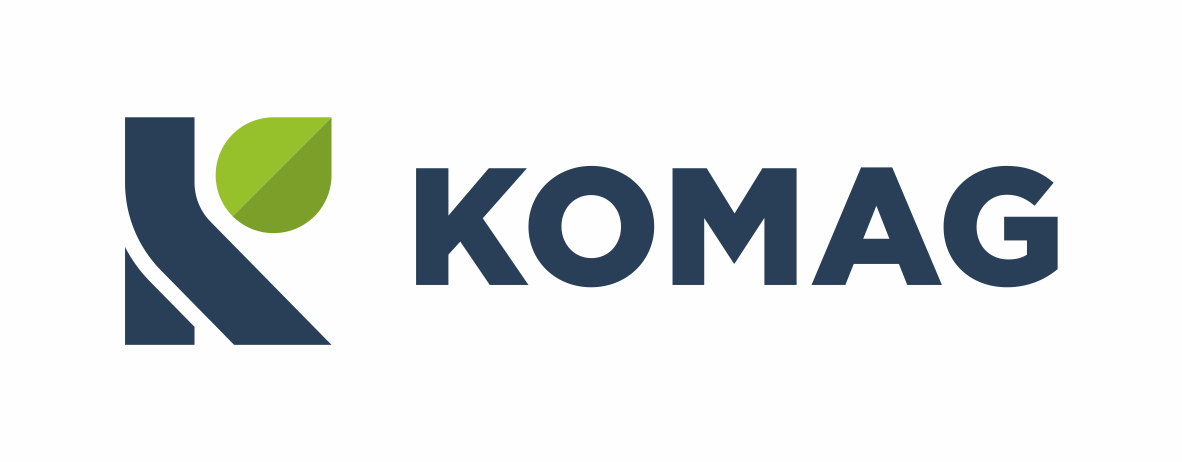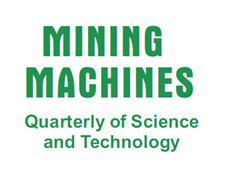Redakcja naukowa: Marek Jaszczuk, Antoni Kozieł
Publikacja powstała na zlecenie Polskiej Agencji Rozwoju Przedsiębiorczości w ramach projektu „Foresight kadr nowoczesnej gospodarki” współfinansowanego przez Unię Europejską z Europejskiego Funduszu Społecznego.
Monografia nr 7
Gliwice 2009. s 1-87
ISBN 978-83-60708-39-2
egz. bezpłatny
W monografii przedstawiono wyniki badań Panelu Tematycznego „Przemysłu maszynowego”, uzyskane w trakcie realizacji projektu „Foresight kadr nowoczesnej gospodarki”, wykonywanego na zlecenie Polskiej Agencji Rozwoju Przedsiębiorczości, przez konsorcjum złożone z: Instytutu Podstawowych Problemów Techniki PAN (Koordynator), Polskiej Izby Gospodarczej Zaawansowanych Technologii oraz firm SMG/KRC Poland Media S.A..
Celem projektu foresight było przeprowadzenie prac badawczych w zakresie pożądanych kwalifikacji kadr zarządzających oraz pracowników przedsiębiorstw, w perspektywie czasowej 10 lat. W ramach projektu powołano pięć paneli tematycznych:
„Kadry przyszłości”, kierowany przez Krzysztofa B. Matusiaka,
„Technologie Informacyjne i Telekomunikacyjne”, kierowany przez Tomasza Kulisiewicza,
„Energetyka”, kierowany przez Janusza Brzóskę,
„przemysł maszynowy”, kierowany przez Antoniego Kozieła,
„Przemysł Chemiczny”, kierowany przez Jacka Gulińskiego.
Zakres prac badawczych obejmował ocenę stanu wiedzy, analizę wynikającą z metodyki realizacji projektów foresight oraz opracowanie scenariuszy kluczowych: SWOT, STEEPV (analizę krzyżową), badanie Delhi oraz opracowano scenariusze:
„Skok cywilizacyjny” – optymistyczny,
„Twarde dostosowania” – umiarkowany,
„Słabnący rozwój” – pesymistyczny.
Przy opracowaniu scenariuszy uwzględniono założenia i wyniki Narodowego Programu Foresight „Polska 2020”.
W monografii przedstawiono:
przewidywalne kierunki rozwoju technicznego przemysłu maszynowego,
czynniki i uwarunkowania: społeczne, ekonomiczne, środowiskowe i polityczne, determinujące zapotrzebowanie na kadry,
pożądane kwalifikacje pracowników, zgodnie z wymaganiami innowacyjnej gospodarki,
szanse i zagrożenia mające wpływ na rozwój kadr dla przemysłu maszynowego,
dziedziny, które państwo powinno wspierać, aby w okresie długoterminowym przygotować kadry dla przemysłu maszynowego.
W scenariuszach przedstawiono warianty zdarzeń, które mogą sprzyjać lub utrudniać rozwój kadr.
Źródłem praw do publikacji jest umowa zawarta pomiędzy Polską Agencją Rozwoju z siedziba w Warszawie zwana Licencjodawcą, a Instytutem Techniki Górniczej z siedzibą w Gliwicach zwanym Licencjobiorcą. Publikacja powstała na zlecenie Polskiej Agencji Rozwoju Przedsiębiorczości w ramach projektu „Foresight kadr nowoczesnej gospodarki” współfinansowanego przez Unię Europejską z Europejskiego Funduszu Społecznego.
CONDITIONS FOR DEVELOPMENT OF LABOUR FOR MACHINERY INDUSTRY TILL 2020
Scope of the project and its objectives
Development of scenarios for determining the need for managers
and workers in the engineering industry, in the future 10 years with identification of required competencies in the areas of: education, innovation and production was the objective of the research work of the Thematic Panel "Machinery Industry", implemented under the project "Foresight of modern economy labour".
The project’s research work used the method of foresight tools, including: expert panel meetings, brainstorming, analysis: SWOT, STEEPV and cross, Delphi survey and making of scenarios.
Basing on knowledge and experience of experts from research centers and industry, three scenarios for development of personnel for the machinery industry were prepared:
- "Leap of civilization" - optimistic,
- "Tough adaptation" - moderate,
- Weakening growth - pessimistic,
on the basis of which need for educating staff, working in the innovation sector and in the sector of machinery production, with the required skills and competencies was determined.
Characteristics of machinery industry
Machinery industry is a supplier of capital goods for the economy, and its products shape the base of production in other industries. Trend analysis and assessment of macro-factors showed that the machinery industry is facing challenges that affect its growth or stagnation over the future 10 years.
These include globalization, competition, new technologies and requirements: legal, environmental, social, quality and economic.
Despite the difficult situation caused by the current global financial crisis, it is expected that there will be changes in improvement of flow of capital on a global scale, there will be change of production of certain types of products and change in demand for investment goods, including products of the machinery industry.
The development of knowledge-based economy now places new demands as regards direction and level of training of personnel for the machinery industry. Aging of society in developed countries will reduce the rate of economically active persons. Migration and low levels of education mean that the problem of shortage of specialized personnel in the machinery industry will continue to grow and may become crucial if the global economy starts to go out from the financial crisis.
Labour market and its requirements will affect change in the level of qualifications and in training of labour. There will be a change in the machine manufacturer's location in regions where labour costs are lower. The global market will force a larger scale and scope of production, but also will require greater specialization. In the case of Polish machinery industry doubling in demand is expected over the next 8 years. New jobs will be created in a result of innovative activities.
Skills and competences of labour for the machinery industry will have to grow steadily at all employment levels. Thus planning of labour development, in the light of future needs in the field of education, creating innovative solutions and production, is very important.
To obtain increased efficiency of machinery and equipment production requires a lot of flexibility, including the best use of material and human resources. In the future the labor market will be characterized by frequent changes of profession or position, taking short-term work with tendency to training and to increasing qualification level. Working for the same employer for the whole life will be very rare. Moving to other companies, acquiring new skills through further training supported by employers will be more frequent. Determining factor in development of labour for the machinery industry will be: the system of education, labour market and technology development.
The education system will depend, among others, on demographic changes. In the projection period the number of people of retirement age in Europe will increase, and in Poland the number of people of working age will decrease, as a result of demographic decline. People in retirement age, employed as lecturers, consultants or advisers will play an increasing role in education process. Desired characteristics in the training process should be: teamwork, decision-making skills, communication and creativity, as they are considered to be essential in life. Great attention should be paid to the practical aspect of education, which greatly facilitate professional start. Also, the employment of lecturers and researchers from countries of the former 15, and Northern Europe will improve the education system. System of continual learning, in the aspect of interdisciplinarity and knowledge management will be implemented.
Results of analysis of key factors including the following aspects, were the basis for making scenarios for the development of labour for the machinery industry:
- social, associated with education policies, adaptation of education system to needs of the economy, resources and structure of the engineering staff, level of education staff, school co-operation with universities,
- technological, including: knowledge and technology transfer, training
in innovation and entrepreneurship, - economical concerning: changes in economic situation, co-financing of education and training systems by the industry, level of investment for science,
- environmental,
- political and legal, covering the global market and professional specialization, market competition, adaptation of legal regulations to EU requirements.
It was assumed that the scenario "Leap of civilization" includes the situation when the above key factors will develop positively. Planned reforms and system creation will be fully accepted by society. Machinery industry will develop as a result of implementation and transfer of innovative technologies. Environmental requirements will be met and legal regulations will conform to EU requirements. It is also assumed that financial and economic crisis will end soon and process of economic integration will be realized.
In the scenario, "Leap of civilization" there is a rapid economic development of the country, including the business sector, among others, due to foreign investment inflows. Structural funds and EU funds support development of the research base, education system and intellectual property protection. Secondary school graduates are encouraged to study new specializations associated with needs of machinery industry. New technologies develop, due to the availability of financial resources for the development of machinery industry. There is an increased interest in studies of technical specializations. Quality of education improves. There is a development of organizations supporting technology transfer. New jobs are created in the machinery industry. Professional activity of seniors increases. It is expected that employment in the machinery industry will increase by about 30 thousand jobs with increase of share of people with university education. There will be a reduction in employment of about ten thousand or so production jobs with time-consuming and simple manufacturing operations.
There is an increase in employment in the area of new technology and in universities. Increase in demand for staff will concern specialists in designing, manufacturing and testing of machines and equipment. Knowledge management experts in the field of engineering: nanotechnology, information technology and mechatronics, will be required. Professionals on the use of knowledge gained from outside that learn from cooperators, clients and competitors will be required as the outsourcing increases. Personnel prepared to commercialize the results of scientific-and research work will be needed. Demand for engineers, technologists, service personnel to ensure quality, maintenance and safety management and environmental protection in the area of production and exploitation will increase. Professionals with extended competence that manage companies will be required.
According to experts’ opinion, the scenario “tough adaptations” is the most probable. Slow, stable, economic growth is assumed. Foreign investments flow. Structural funds are used more effectively. State policy establishes legal and financial instruments supporting development of machinery industry and research background. Structural funds are effectively used.
International collaboration as regards training of labour for machinery industry, including high technologies, develops. Reform of secondary schools, considering needs of economy, takes place.
Funds for a development of machinery industry become available, information infrastructure is modernized and transfer and modernization of manufacturing technologies improve. Increase of employment in machinery industry of about 18 thousand people is assumed. Share of immigrants in manufacturing process increases significantly, up to 10% of employed people, what is a result of worsening demographic structure and emigration of young and well-educated people.
The tendencies as regards demand for personnel in the area of development of new technologies, training of personnel in a sector of manufacturing and exploitation are similar to those in the scenario “leap of civilization”. Qualification requirements will be different depending on the place of employment. General knowledge will be preferred in small and medium companies, while technological knowledge will be preferred in big companies.
In “stabile development” scenario a continuation of strategy of building of uniform European market, with easy trading with machines and equipment and openness as regards workplaces, is realized and then weakening of integration processes and increase of protectionism and turnovers of machines and equipment take place. A selective development of each, selected area of machinery industry takes place. Difficulties with access to well-trained and educated employees increase. System of education is reformed insufficiently (partial adaptation of the education system to economy demands). Condition and structure of conventional machinery industry are maintained to a high degree.
An increase of employment by about 10 thousand people, and then stabilization of employment, due to decrease of investments, at lowering of number of people with university education to about 15% of all employees, are assumed for the first period of the scenario.
Realization of the scenario would lead to increase of employment rate in the machinery industry by about 5% what in turn would result in decrease of competiveness on the global market.





 Badanie bezpieczeństwa wyrobów
Badanie bezpieczeństwa wyrobów Klaster Maszyn Górniczych
Klaster Maszyn Górniczych